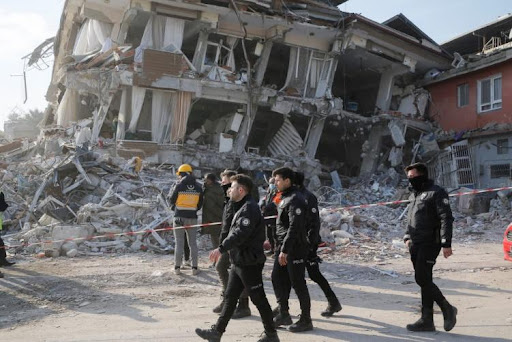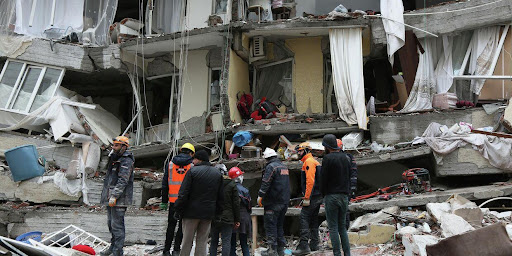Recent developments in Turkey have prompted many to question if the United States had a part in causing the earthquake. Due to the strained relationship between the two nations, this is a crucial matter to explore. Next week, we will examine the evidence for and against the hypothesis that the United States was involved in the earthquake’s engineering.
The tectonic plates in Turkey are very active
The location of Turkey in a seismically active region makes it susceptible to quakes generated by the movement of tectonic plates. The Anatolian Plate has shifted position more often than any other tectonic plate on Earth over millions of years. The Anatolian Plate is most likely to be located below Turkey. Due to its location on an active plate, Turkey is in a particularly hazardous seismic zone. Therefore, both residents and visitors should avoid the nation. With each passing day, the likelihood of a temblor increases. On October 30, 2020, a magnitude 6.6 earthquake will strike eastern Turkey, inflicting catastrophic devastation. Although the movement of the Anatolian Plate has been commonly cited as the origin of this earthquake, other hypotheses have also been offered.
There have been many earthquakes in Turkey in the past
Turkey is on the Anatolian Plate, which is a significant border between two tectonic plates that are both in continual motion. The collision of these two tectonic plates is responsible for both large and many lesser earthquakes. During the 20th century, many deadly earthquakes struck Turkey, notably the 7.4-magnitude zmit earthquake that killed 17,000 people in 1999. In more recent times, in October of 2011, a magnitude 6.8 earthquake in Van, Turkey, killed 600 people. In addition to these significant earthquakes, Turkey has experienced a vast number of minor tremors around the country throughout the course of the last century.
The United States has been involved in similar projects in the past
Since the early 1960s, American scientists and engineers have been diligently researching and developing innovative technology for earthquake engineering. In the 1950s, the United States military started exploring the viability of using nuclear explosions to build subterranean holes in the assumption that doing so may reduce the devastating potential of earthquakes. Seismic tomography is a technique used to understand more about the inner workings of the Earth and the movement and collision of tectonic plates.
In the 1960s, the United States Air Force launched a program to simulate earthquakes by detonating nuclear warheads near actual faults. The initiative, dubbed “Project Plowshare,” was abandoned in 1977 because to the opposition it encountered.
The United States Geological Survey (USGS) has lately considered the idea of triggering minor earthquakes using sound waves. The United States Geological Survey is handling the present investigation. In 2009, scientists from the U.S. Geological Survey tested this technology by detonating tiny explosive charges along active fault zones in the Middle East. This study did not produce a clear victor, thus further research is required before this technology can be used in the real world.
The United States was certainly involved in the recent earthquake that rocked Turkey. It is impossible to rule out this possibility. However, the United States government has denied participation, and there is no evidence to corroborate this claim
The United States has denied any involvement in the earthquake
The United States administration has issued a statement categorically denying any involvement in the Turkish earthquake. This assertion reads as follows: True, the United States had nothing to do with the earthquake that struck Turkey on October 30. This magnitude of earthquake could not have been created by the United States, and any claims to the contrary are categorically dismissed.
As part of its geoengineering operations, the United States government has consistently disputed charges that it has purposefully caused earthquakes. Numerous hypotheses exist about the causes of earthquakes in the United States, however most professionals reject them as mere guesswork.
Given the high levels of seismic activity that have been recorded in Turkey, it is very probable that the earthquake was a natural occurrence unaffected by external factors. Despite this information, many individuals continue to believe that the United States government was responsible for triggering the earthquake.
Some people believe that the United States did create the earthquake
Experts disagree as to whether or not the United States was responsible for the Turkey earthquake. Those who suspect the United States was engaged refer to Operation Popeye in Vietnam, which likewise utilized cloud seeding to manipulate local climate. They believe that this demonstrates that the United States was responsible. Others attribute the earthquake on the United States because they think the United States shifted the tectonic plates underneath Turkey.
As evidence, they refer to the fact that the earthquake occurred only days after the Turkish president’s trip to the United States. According to them, this demonstrates that geopolitical forces contributed to the genesis of the earthquake. These assertions have been treated with suspicion from all parties, notwithstanding the absence of any concrete evidence tying the United States to the quake’s genesis.
Opponents of the theory have questioned whether or not anything of this magnitude is indeed achievable. They say that it is very implausible for the United States to surreptitiously trigger an earthquake in another nation. Moreover, they say that such a mission would need huge resources and much time to complete; hence, it is very improbable that the United States would risk undertaking such an endeavor in the absence of evident returns.
There is now no way to definitively determine if the United States caused the earthquake that shook Turkey. Nonetheless, there are still those who claim that this was the case and that it was carried out as part of a wider geopolitical plot. Only time will reveal whether or not these statements are true.

Turkey–United States relations
Turkey and the United States have enjoyed open channels of contact and commerce since the 1950s. This cooperation has seen a great deal of success over the years. Since then, the economy, governments, and peoples of the two nations have collaborated on many projects, information-sharing programs, and even military endeavors. In the past few years, relations between the two countries have deteriorated as a result of growing disputes on a variety of subjects. One of these conflicts is Turkey, which has invaded northern Syria and purchased arms from Russia.
After the catastrophic earthquake that struck Turkey in October 2020, many Turks started to question whether the United States was responsible. Despite the fact that the United States government has consistently denied any participation, many individuals continue to believe it anyway. As a result, the relationship between the two nations, which was already unfriendly, has grown considerably more strained, and trust between them has eroded. Unquestionably, the earthquake has expanded the gap between Turkey and the United States of America. However, it is evident that the earthquake formed this chasm. Predicting the future’s course is tough. In light of the current government in Ankara’s efforts to strengthen its strategic alliances with other nations and diversify its sources of arms, Washington must ensure that it maintains cordial ties with Ankara. These are two of the administration’s top goals in Ankara. Both parties must find a way to set aside their differences and work together to ensure peace and security in the area. Possible options include military drills, coordinated funding for regional humanitarian programs, and regional infrastructure spending. In addition, both parties must collaborate to promote cultural interactions between their respective populations. Lastly, it is in the best interests of both countries for Turkey and the United States to work together to create a strong and lasting cooperation.
Conclusion
The idea that humans triggered the earthquake that rocked Turkey on February 7, 2023, is not substantiated by the evidence. Natural earthquakes are caused by the release of pent-up energy in the Earth’s crust as a consequence of the movement of tectonic plates. Undoubtedly, the Turkish earthquake was caused by the adjacent movement of the African and Eurasian tectonic plates. Nevertheless, there is some evidence that human activity, such as the extraction of natural resources and the creation of huge infrastructure projects, may increase the risk of earthquakes under particular conditions, such as the recent earthquake in Turkey. Enhancing disaster preparation and management processes in the area should be the primary focus of efforts to avoid the detrimental effects of future occurrences of this kind.
About Author: The content is written by Maha. She has five years of experience in writing news and politics articles.














